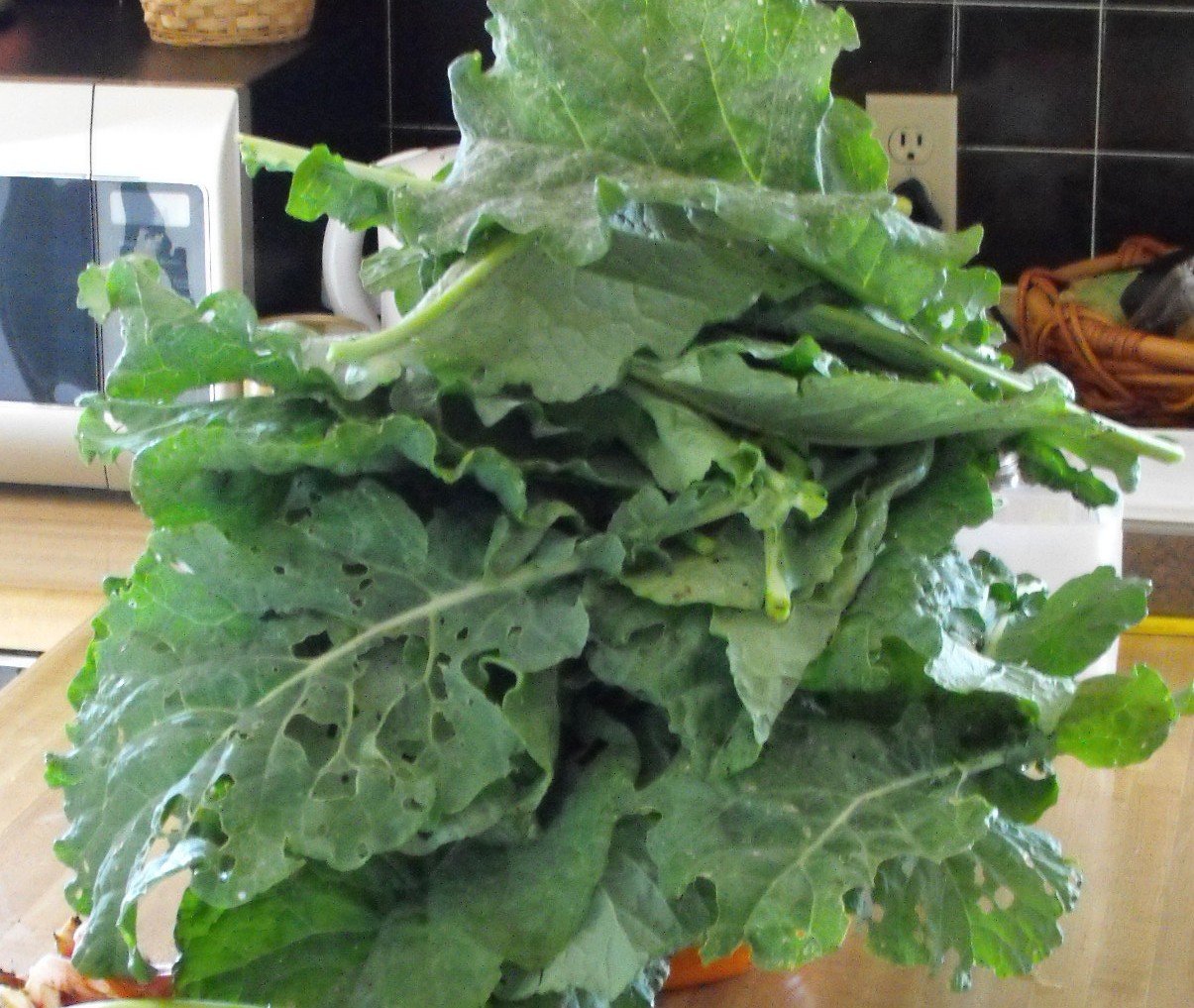INGREDIENTS
This is what you need for 2 servings:
- 1 lb. collard greens
- 4 slices bacon, cut small
- S&P
Collard refers to certain loose-leafed cultivars of Brassica oleracea, the same species as many common vegetables, including cabbage (Capitata Group) and broccoli (Botrytis Group). Collard is part of the Acephala Group of the species, which includes kale and spring greens. They are in the same cultivar group owing to their genetic similarity. The name "collard" comes from the word "colewort" (the wild cabbage plant).
The plants are grown for their large, dark-colored, edible leaves and as a garden ornamental. Collard greens have been eaten for at least 2000 years, with evidence showing that the ancient Greeks cultivated several types of collard, as well as kale.
The cultivar group name Acephala ("without a head" in Greek) refers to the fact that this variety of B. oleracea does not have the close-knit core of leaves (a "head") like cabbage does, making collards more tolerant of high humidity levels and less susceptible to fungal diseases. The plant is a biennial where winter frost occurs; some varieties may be perennial in warmer regions. It has an upright stalk, often growing over two feet tall. The plant is very similar to kale.
The plant is commercially cultivated for its thick, slightly bitter, edible leaves. They are available year-round, but are tastier and more nutritious in the cold months, after the first frost.[5] For best texture, the leaves are picked before they reach their maximum size, at which stage they are thicker and are cooked differently from the new leaves. Age does not affect flavor. Flavor and texture also depend on the cultivar; the couve manteiga and couve tronchuda are especially appreciated in Brazil and Portugal.
MY COMMENTS:
I have grown and harvested collards in my backyard vegetable garden. (Pic1) Not only do collards do well in winter, but they also tolerate our desert Summer heat pretty well. These garden pictures were taken in August at the hottest part of Summer. The leaves taste slightly sharp, but not nearly as much as mustard greens.
Do take notice of the many holes in the leaves. I've never seen snails in my garden, but there are several kinds of caterpillars that would gladly eat them.
I have also bought canned collard greens. For reasons unknown, I do not have any recipe pictures.
 Pic1-3: collards in my vegetable garden 2013-08-11
Pic1-3: collards in my vegetable garden 2013-08-11I find collards only rather harsh. I prefer to mix collards with turnip greens and celery for a mellower flavor.
This is what you need for 2 servings:
 Pic1: collard leaves from my garden
Pic1: collard leaves from my gardenThe pictures below were borrowed from the internet.
In the Southern U.S. cuisine, collard greens are a staple vegetable. They are often prepared with other similar green leaf vegetables, such as spinach, kale, turnip greens, and mustard greens in the dish called "mixed greens".
Typically used in combination with collard greens are smoked and salted meats (ham hocks, smoked turkey drumsticks, smoked turkey necks, pork neckbones, fatback or other fatty meat), diced onions, vinegar, salt, and black pepper, white pepper, or crushed red pepper, and some cooks add a small amount of sugar.
Traditionally, collards are eaten on New Year's Day, along with black-eyed peas or field peas and cornbread, (Pic8+9) to ensure wealth in the coming year. Cornbread is used to soak up the "pot liquor", a nutrient-rich collard broth.
Collard greens may also be thinly sliced and fermented to make a collard sauerkraut that is often cooked with flat dumplings.
In Portuguese and Brazilian cuisine, collard greens are a common accompaniment to fish and meat dishes. They make up a standard side dish for feijoada, a popular pork and beans-style stew.
Thinly-sliced collard greens are also a main part of the popular Portuguese soup, caldo verde ("green broth"). (Pic10) For this broth, the leaves are sliced into strips, 2–3 millimetres (0.079–0.118 in) wide (sometimes by a grocer or market vendor using a special hand-cranked slicer) and added to the other ingredients (onions, bacon, potatoes & sausages) 15 minutes before it is served.
 Pic5: collards grown in a container
Pic5: collards grown in a container
 Pic8: collard greens, corn bread, black-eyed peas
Pic8: collard greens, corn bread, black-eyed peas